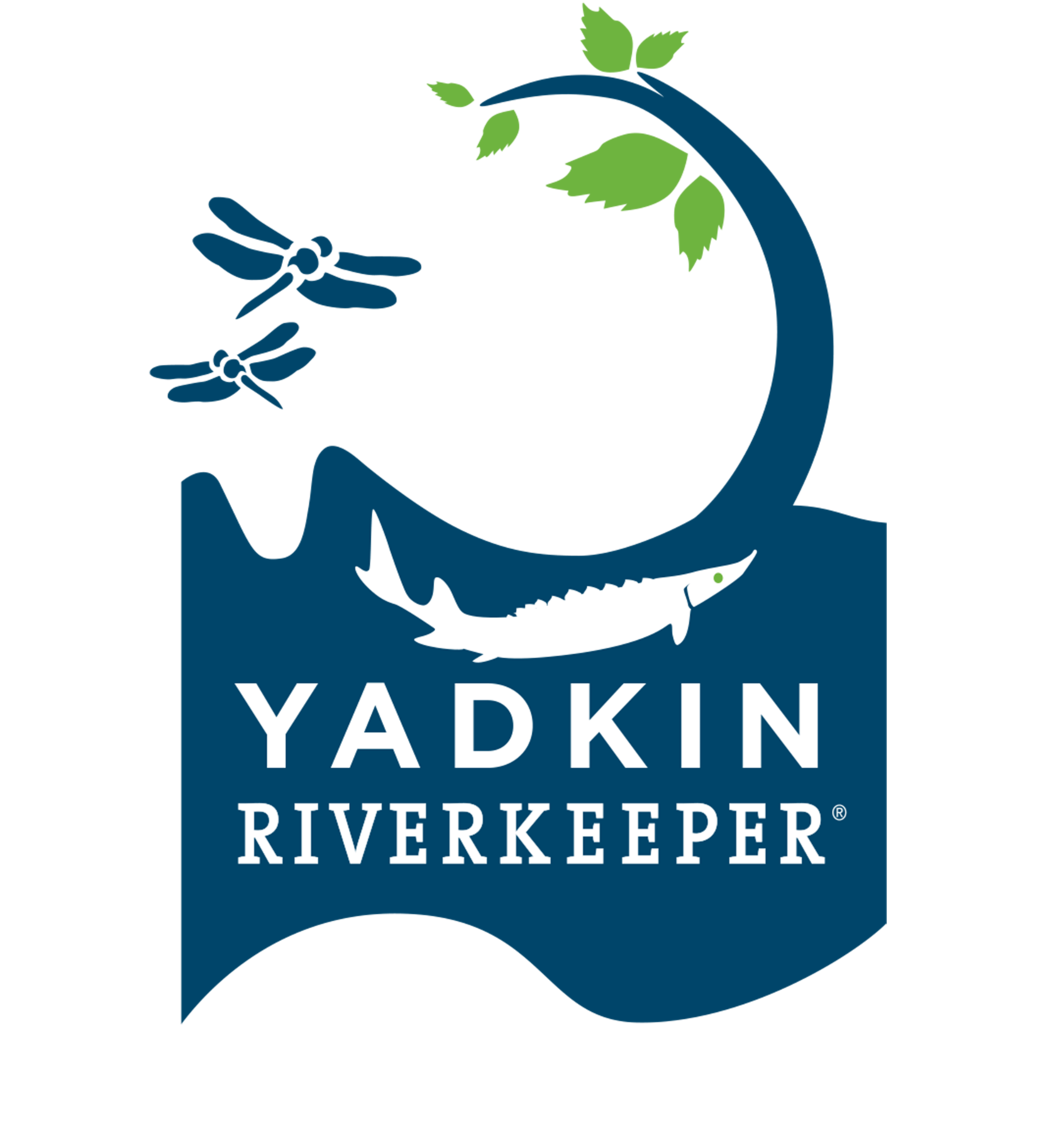Yadkin Riverkeeper took an aerial monitoring flight with SouthWings on January 25th to assess land use and water quality issues along the South Yadkin River.
Left to Right: Grace Fuchs- Yadkin Riverkeeper Assistant, Edgar Miller- Executive Director and Yadkin Riverkeeper, Holliday Obrecht III- Volunteer Pilot with SouthWings
Confluence of Mainstem of Yadkin River (left) and the South Yadkin River (right)
The South Yadkin contributes to significant sedimentation and nutrient loading in High Rock Lake. You can see this at the confluence of the South Yadkin and the main stem.
During our flight we saw chicken houses, chicken houses, and more chicken houses. There is a mix of old and new buildings, showcasing how the industry has been growing recently. These industrial-size buildings on average are 40,000 square feet and hold 35,000 birds. We counted 125 houses on this brief trip. That makes for 4.3 million chickens and almost 115 acres of land use. According to USDA Agricultural census data from 2017, there are over 280 million poultry birds produced in the Yadkin River basin annually.*
Raising chickens is just one part of the process in getting it on our tables to eat. The South Yadkin is also home to a Tyson® rendering facility that produces other products from the by-products of chicken slaughter, such as animal feed, lard, and tallow.
The Tyson® facility in Harmony, NC is so large that it has its own wastewater treatment plant on site.
The poultry industry in NC is largely unregulated. In contrast, dairies and swine production facilities have more permitting requirements. In the photo above, you can see lagoons placed very close to the banks of the South Yadkin River.
Waste is stored in uncovered lagoons, and the lagoons can fill up if waste is not applied to fields or moved offsite.
We also witnessed a few instances of logging closer to the Brushy Mountains. Fortunately, much of the Yadkin watershed is undeveloped or agricultural land, so development is not its top threat. But these instances of clear cutting can cause rapid erosion and sedimentation of small streams.
Yadkin RiverKeeper will continue to conduct aerial monitoring throughout the watershed to monitor for water quality threats.
*2022 Draft Yadkin-Pee Dee River Basin Plan








